Big, Powerful and Pricey: Lenovo ThinkStation PX
Lenovo delivers a new flagship workstation marked by new design and myriad options.
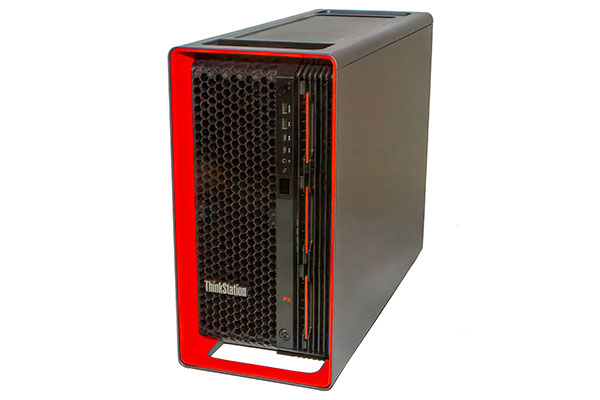
Fig. 1: The Lenovo ThinkStation PX sports an all-new chassis designed in conjunction with Aston Martin.
Latest News
In Spring 2023, Lenovo launched three new ThinkStation workstations: the PX, P7 and P5. Billed as “the most technologically advanced desktop workstations the company has ever built,” the systems were redesigned from the ground up to “exceed today’s most extreme, high-computing workloads across industries.”
In addition to featuring the latest Intel processor technology with up to 120 cores and support for high-end NVIDIA RTX professional graphics processing units (GPUs), the new workstations boast all-new chassis designs. Lenovo enlisted its customer—high-performance automotive manufacturer Aston Martin—to co-design the new ThinkStation chassis.
We recently received one of these new systems. The Lenovo ThinkStation PX is the company’s highest-end, flagship workstation product, able to reach extreme levels of power and performance with support for more cores and expandability than any previous generation of Lenovo workstation.
The ThinkStation PX is “rack-optimized”—meaning it can be housed in a server cabinet in a data center as well as used as a desktop tower. The ThinkStation PX can be powered by one or two of the latest 4th Gen Intel Xeon Scalable processors and also offers support for up to four dual-slot NVIDIA RTX 6000 Ada Generation GPUs.
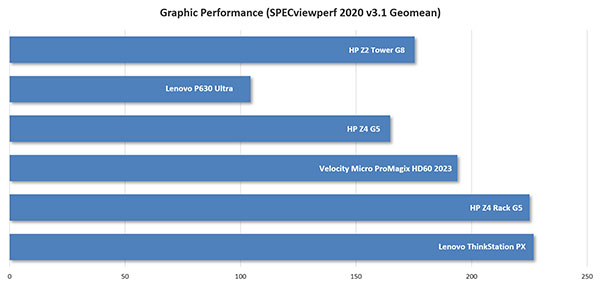
New Design
The ThinkStation PX we received came housed in a chassis with a 3D grill inspired by Aston Martin’s DBS grand tourer automobile. Measuring 8.69x22.63x17.37-in. (WxDxH) and weighing 60.5 lbs., the new chassis doubles down on Lenovo’s iconic red.
The front bezel, which features redesigned air baffles and large 3D hexagonal ventilation openings, is recessed nearly 2 inches and surrounded by a red inner ring. A vertical band houses the power button, two USB 3.2 Type-A connectors, two USB 3.2 Type-C connectors, a combo headphone/microphone jack, diagnostic LED and adjacent switch and a front-access bay lock. To the right of this are six front-panel access bays. A ThinkStation logo appears to float in front of the grill, with the red dot over the “i” illuminated when the system is powered on.
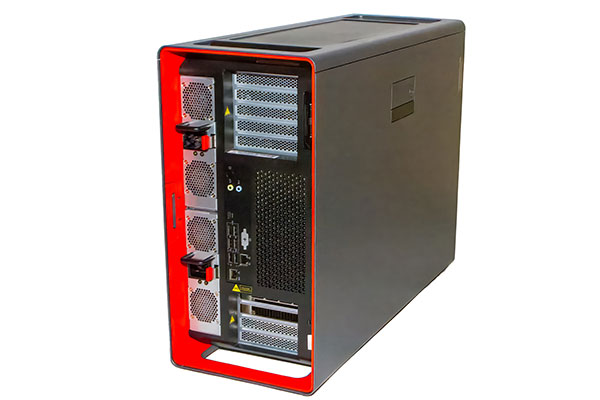
Fig. 2: The rear panel of the ThinkStation PX features the same new design aesthetic, with lots of expansion.
The rear panel is also recessed and surrounded by a similar red ring and features two redundant power supply unit bays, two PCI-Express card areas, power button, audio line-in and line-out jacks, a single USB 3.2 Type-C connector, four USB 3.2 Type-A connectors, two USB 2.0 Type-A connectors and two RJ45 Ethernet jacks (1G and 10G). Prices start at $4,663 for a system based on an Intel Xeon Silver 4410Y processor, 16GB of error-correcting code (ECC) RAM and a 512GB M.2 solid-state drive, but since that entry-level system lacks integrated graphics, you would likely need to add a graphics card.
Doubling Down on Red
As we have come to expect, red is not only a signature color of the Lenovo brand, but it also acts as a guide to Lenovo workstations. Large handles built into each corner of the chassis make it easy to move this very heavy system. Red touch points clearly indicate how to swap components, starting with the removable power supplies.
Lifting a flush-mount lever—reminiscent of the flush door handles on Aston Martin automobiles—releases the entire panel on the left side of the case, revealing a well-organized interior. Again, red touch points indicate how to remove the three front fan assemblies, the plastic CPU duct and rear fan housings. A red lever near the bottom of the case releases the panel on the right side of the case, providing access to the front drive bays.
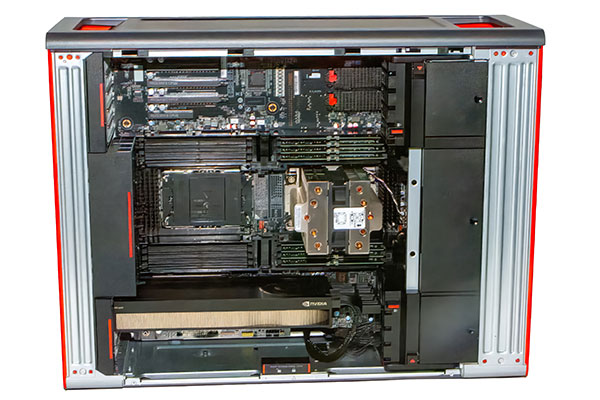
Removing the CPU duct reveals the dual CPU sockets, each flanked on either side by four memory sockets, for a total of 16 sockets. With two CPUs installed, the ThinkStation PX can support up to 2TB of DRR5 memory. Lenovo offers Intel Xeon CPUs ranging from the 12-core 2.0GHz Xeon Silver 4410Y to the 60-core 1.9GHz Xeon Platinum 8490H. A pair of 8490H CPUs would add $57,019 to the base system price.
Our evaluation unit was more modestly equipped with an Intel Xeon Gold 5416S processor. This Sapphire Rapids CPU features 16 cores, a base frequency of 2.0 GHz, and a maximum turbo frequency of 4.0Ghz and added $429 to the base price. The CPU is built on the Intel 7 lithography, features eight memory channels, and a 30 MB cache while requiring 150 watts.
Since our evaluation unit included a single CPU, only the memory sockets dedicated to that processor were filled. For our system, Lenovo included 128GB of RAM, installed as eight 16GB DDR5-4800MHz ECC registered dual-inline memory modules (DIMMs), adding $2,649.
A bank of PCIe expansion slots is located to either side of the CPU and memory sockets, with the bank of four x16 slots in the lower section dedicated to CPU1 and the bank of four x16 slots plus an x8 slot in the upper section assigned to CPU2. Again, with only one CPU, the upper expansion slots remained empty, while the lower bank contained a single NVIDIA graphics card.
Lenovo offers a choice of seven different NVIDIA GPUs, ranging from the T400 with 4GB of discrete memory ($129) to the ultra-high-end NVIDIA RTX 6000 Ada Generation GPU with 48GB ($10,999). Our evaluation unit included an NVIDIA RTX A6000 graphics card with 48GB of GDDR6 ECC memory, 10,752 compute unified device architecture (CUDA) cores, 336 Tensor cores and 84 RT cores. That board, which increased the system price by $4,799, provides a 384-bit interface and a bandwidth of 768 GB/second, while requiring 300 watts and providing four DisplayPorts.
The ThinkStation PX also offers a range of storage options. The system provides three standard M.2 slots directly on the motherboard as well as the ability to use up to three front-accessible drive bays. In addition, the second power supply bay can be converted into a fourth SATA drive bay enclosure.
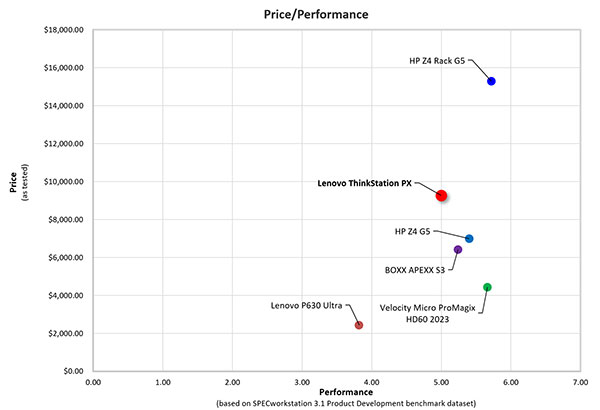
Price/Performance chart based on SPECwpc Product Development benchmark dataset. Click here for full-size image.
Our evaluation unit included a 1TB M.2 2280 PCIe Gen 4 Performance TLC Opal SSD, an $89 upcharge from the 512 GB drive included in the base configuration. Lenovo offers other M.2 drives with up to 4TB capacities as well as 3.5-in. SATA drives up to 12TB. The second (redundant) 1,850-watt power supply added an additional $675 to our system.
Mixed Performance
With 16 CPU cores and an ultra-high-end graphics processing unit (GPU), we expected the Lenovo ThinkStation PX to deliver rapid results, and we were certainly not disappointed. On the SPECviewperf test, which is based largely on GPU performance, our ThinkStation PX delivered top scores on several of the individual datasets, while its aggregate performance surpassed every other system we have ever tested.
Its performance on the very demanding SPECworkstation benchmark was also quite good, although the PX did not set any records on this test. Indeed, its price/performance ratio (which is based on the Product Development dataset) lagged that of several other systems we have recently tested, owing largely to the PX’s more costly components.
On our AutoCAD rendering test, which favors systems with fast, multicore CPUs, the 19.6-second average time placed the ThinkStation PX in the middle of the pack, mainly due to its 16 cores running at a modest 2.0GHz. Our evaluation unit remained cool and quiet throughout our testing.
Lenovo rounds out the ThinkStation PX with an excellent 104-key Lenovo USB keyboard and USB optical mouse. Windows 11 Pro for Workstations came preinstalled, and Lenovo backs the system with a 3-year warranty that includes on-site service. Like most Lenovo workstations, the ThinkStation PX is independent software vendor-certified for applications from Ansys, Autodesk, Dassault Systèmes, PTC, Siemens and others.
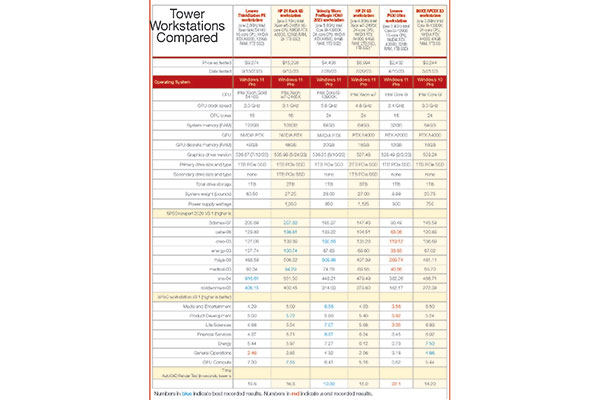
With its myriad options, how you configure your system will significantly impact its cost and performance. While the new Lenovo ThinkStation PX is designed to reach extreme levels of power and performance, it is a large, expensive system more suited for high-end visualization and CAE simulation than mainstream CAD and CAM applications.
More Lenovo Coverage
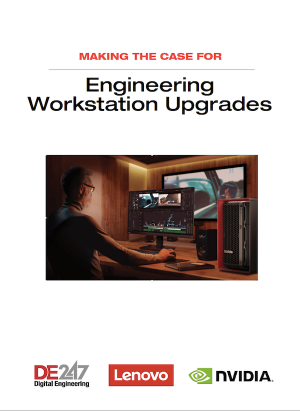
Subscribe to our FREE magazine, FREE email newsletters or both!
Latest News
About the Author
David Cohn is a consultant and technical writer based in Bellingham, WA, and has been benchmarking PCs since 1984. He is a Contributing Editor to Digital Engineering, the former senior content manager at 4D Technologies, and the author of more than a dozen books. Email at david@dscohn.com or visit his website at www.dscohn.com.
Follow DE






